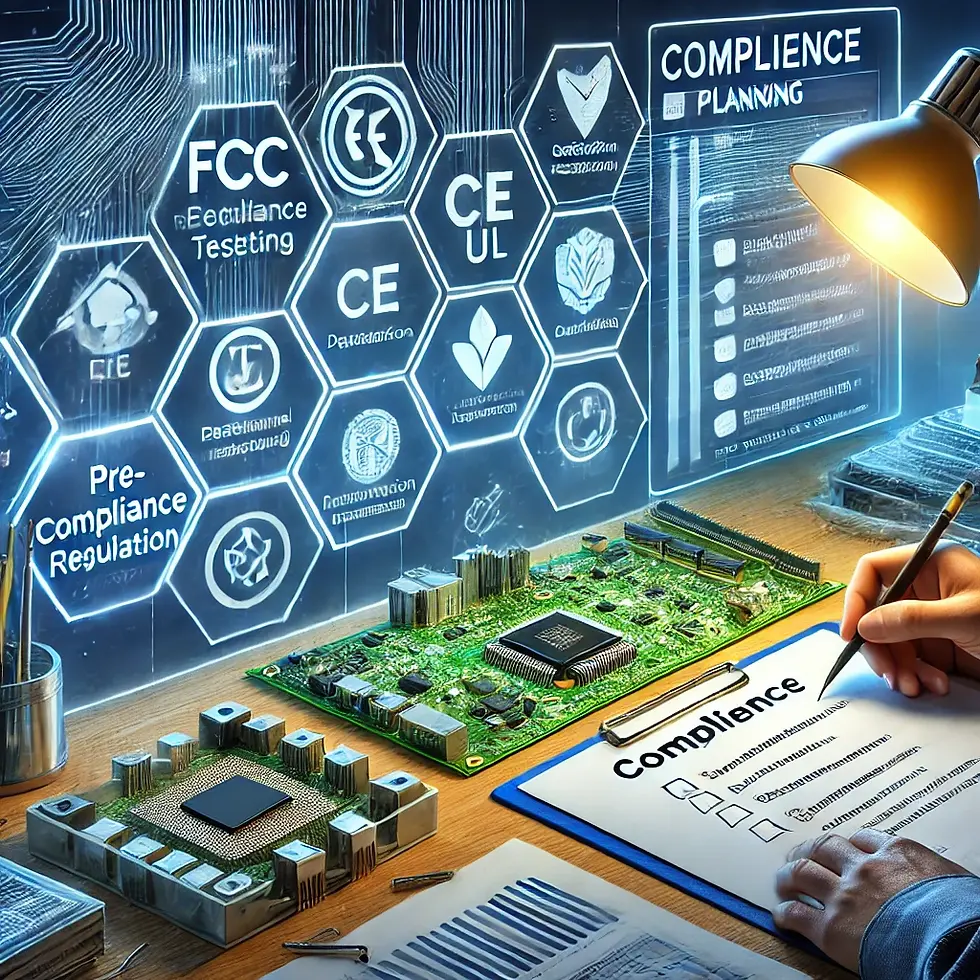The Importance of Proper Compliance Planning in Efficient and Cost-Effective Electronic Product Design
- Patrick Fontoura

- Mar 9
- 2 min read
When designing an electronic product, success depends not only on functionality and innovation but also on compliance with regulatory standards. Failing to integrate compliance planning early in the design process can lead to costly redesigns, production delays, and potential market restrictions. Therefore, compliance planning is crucial for the success and contributes to an efficient and economical product development cycle.

Compliance planning ensures that electronic products meet safety, environmental, and operational standards required by governing bodies such as the FCC, CE, UL, and other regulatory agencies worldwide. Neglecting compliance can result in:
Certification failures – Leading to delays and additional costs for redesigns and retesting.
Market restrictions – Preventing product distribution in key regions.
Legal and financial risks – Potential fines, recalls, or lawsuits due to non-compliance.
The Economic Benefits of Early Compliance Integration
Incorporating compliance planning from the beginning of the design process brings multiple economic advantages, including:
Reduced redesign costs: Catching compliance issues early prevents expensive rework after product development.
Shorter time to market: Ensuring compliance from the start avoids delays in testing and certification.
Efficient resource allocation: Compliance-driven design choices optimize component selection, manufacturing processes, and testing procedures.
Key Steps in Compliance Planning
To ensure a smooth and cost-effective compliance process, follow these essential steps:
Identify Applicable Regulations – Determine the specific regulatory requirements based on target markets and product type.
Engage Compliance Experts Early – Work with experienced compliance engineers to mitigate risks before they become costly problems.
Perform Pre-Compliance Testing – Conduct early-stage testing to identify potential issues and address them proactively.
Maintain Thorough Documentation – Keep detailed records of testing, certifications, and design decisions for future audits and regulatory submissions.
Adapt to Regulatory Changes – Stay updated with evolving compliance standards to avoid unexpected disruptions.
Compliance planning is not just a regulatory necessity—it’s a strategic approach that enhances product reliability, optimizes costs, and accelerates time to market. By integrating compliance considerations into the design phase, companies can ensure smoother product development, minimize risks, and achieve long-term success.
For businesses looking to streamline compliance planning, consulting with experts and leveraging pre-compliance testing can make all the difference. Investing in compliance early saves time, reduces costs, and helps bring innovative products to the market with confidence.




Comments